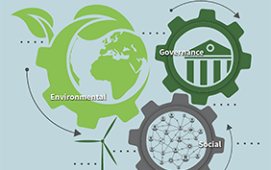
A-Team Group’s TradingTech Insight Summit covered key issues affecting financial markets. These included the options available around trade infrastructure monitoring and the challenges they present, such as network monitoring and timestamping, data capture and governance, increasing crossover between compliance and operations, and maintaining high quality connectivity while moving away from pure infrastructure performance monitoring and towards a more data-driven approach.
The conversation was moderated by Mike O’Hara, partner at The Realization Group, with insights provided by panellists including Leon Lobo, strategic business development manager at the National Physical Laboratory; Neil Horlock, former director and global architect within global markets at Credit Suisse; Marcus Perrett, executive director and global head of LSET Development at Instinet; and Matt Davey, director of product management at Corvil.One of the biggest concerns was around the ongoing evolution of timestamping capabilities and the opacity of how clock synchronisation is being enforced. The panel agreed that while effective infrastructure and traceability are essential, the appropriate level of compliance has yet to be understood and best practice has not yet been established.
While some venues have gone to the extreme – keeping all data available – others have still not decided on their strategy, over 12 months after implementation. In addition, a lot of the different approaches taken prior to the January 2018 MiFID II deadline have not yet been tested, which is raising concerns about the creation of a robust audit trail and resilient reporting capabilities.
The general belief, reassuringly, was that authorities were unlikely to march in and perform a full audit. Instead, clock sync is required as a means of underpinning and supporting overall record keeping, meaning that it is only likely to be investigated if there are prominent record-keeping issues that could indicate a more serious underlying issue. That is not to say, however, that financial institutions should relax. “If there is an investigation, and a perceived weakness emerges in your timekeeping structure, then you will be at an immediate disadvantage when it comes to defending yourself,” warned one panellist.
On the flip side, the benefits of effective timekeeping are numerous, especially when it comes to providing unique trading insights based on value-added data. The panel noted that many firms voluntarily exceed response times required by ESMA, by an order of several magnitudes. “Unless you can measure your timestamp, you are missing insights. That is a competitive edge,” said a panellist. “We are seeing people using timestamps for insight as well as convenience,” agreed another, while a third commented: “Performance is an issue, but any sophisticated trading firm worth its salt can tell you how fast its trading time is already – it is impacted by regulation because it has been meeting all the requirements for five years.”
We are already starting to see products and services generated out of the competition, including new solutions around big data analytics, tick warehousing, advanced and traceable datasets, and more. However, one panellist raised concerns around just how valuable this granularity actually was. “From a regulatory perspective, the point at which someone decides to send an order to market is almost blurred – they can choose to stamp at so many places and still be compliant with the regulation that it is almost meaningless,” he pointed out. “For the venues, it has great value. For other entities, I am not so sure.”
So where does the arms race stop and what progress are firms making towards intelligence over speed? One panellist commented: “We have already moved over to an intelligence-based approach to achieve low latency. Over the past couple of years, people have realised there is gold in the data. Building on top of our investments in time stamping and data analytics, intelligence can leverage really valuable sources of data. You may not be increasing your speed, but you are increasing your smartness.”
Subscribe to our newsletter




